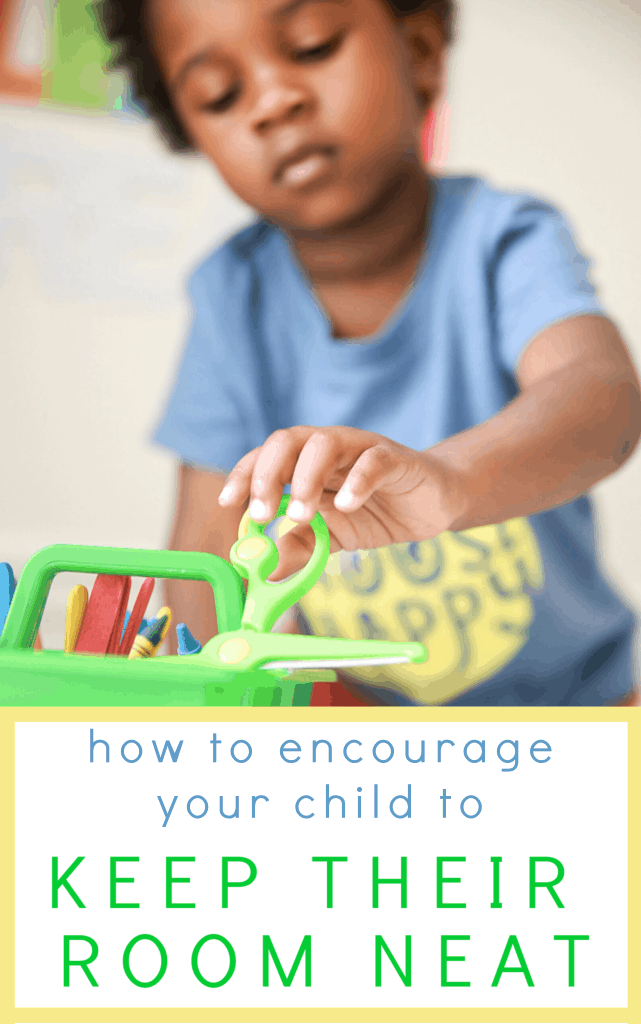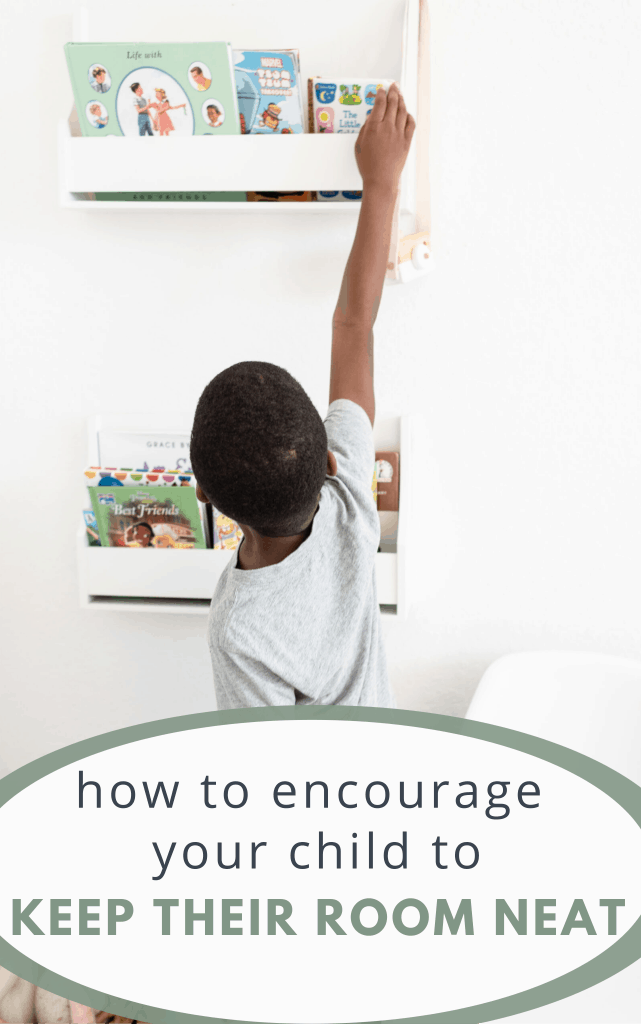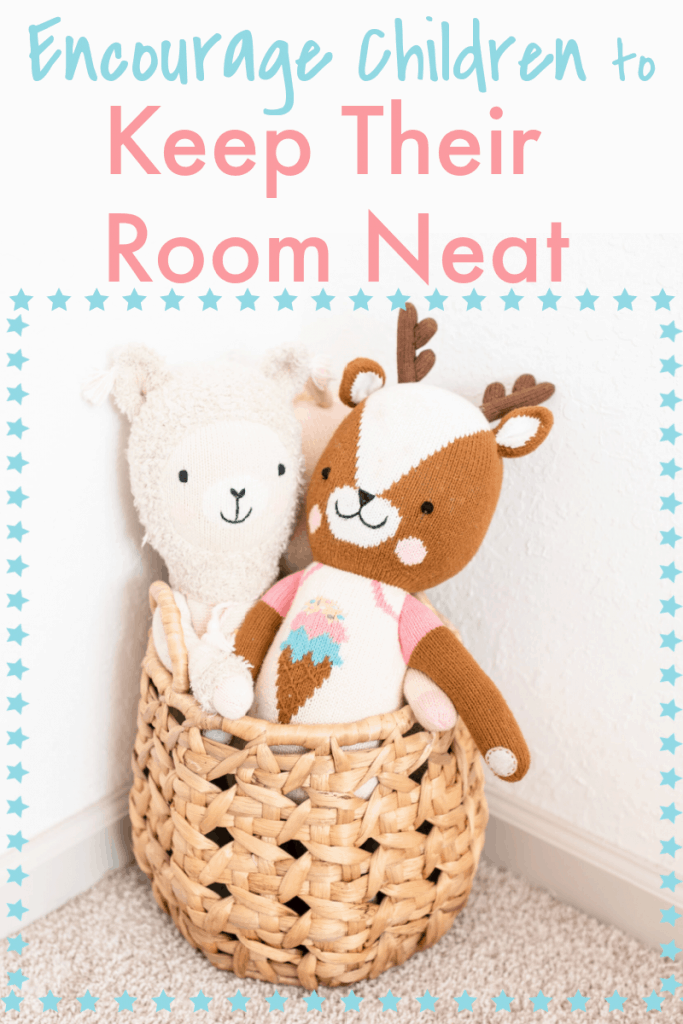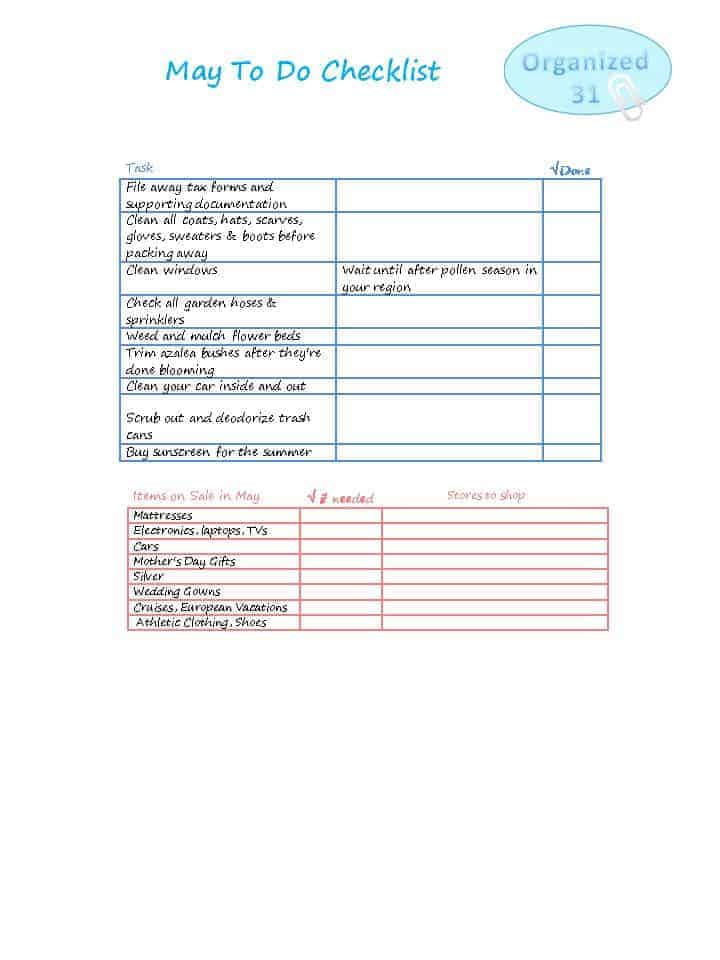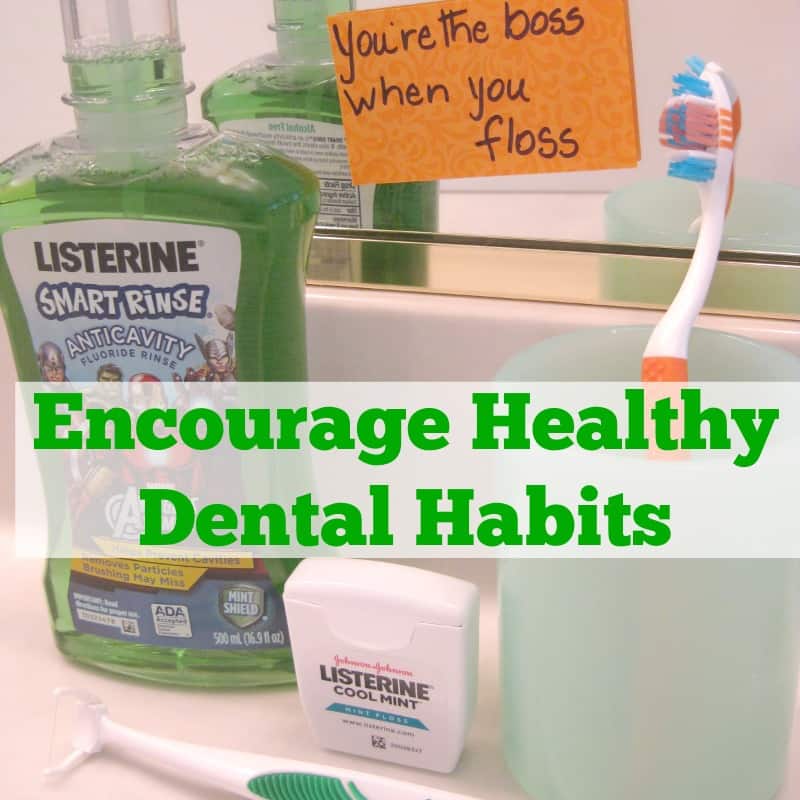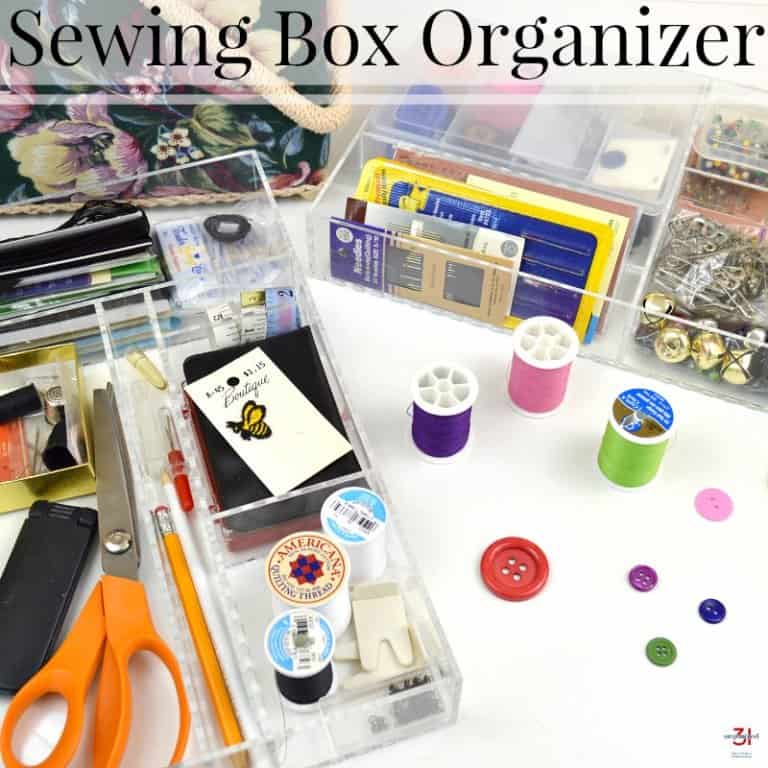Encourage Your Kids to Keep Their Room Neat
This post may contain affiliate links provided for your convenience. We earn commissions if you shop through the links on this page. I am also an Amazon Associate and earn from qualifying purchases Read my full disclosure policy.
Got kids? I know you’ve got toys and lots of stuff. I know you want to know how to encourage your kids to keep their room neat. I’m the mom of three, a professional organizer and a parent educator. I’m sharing my top 12 tips get your kids to pick up their space and their things.
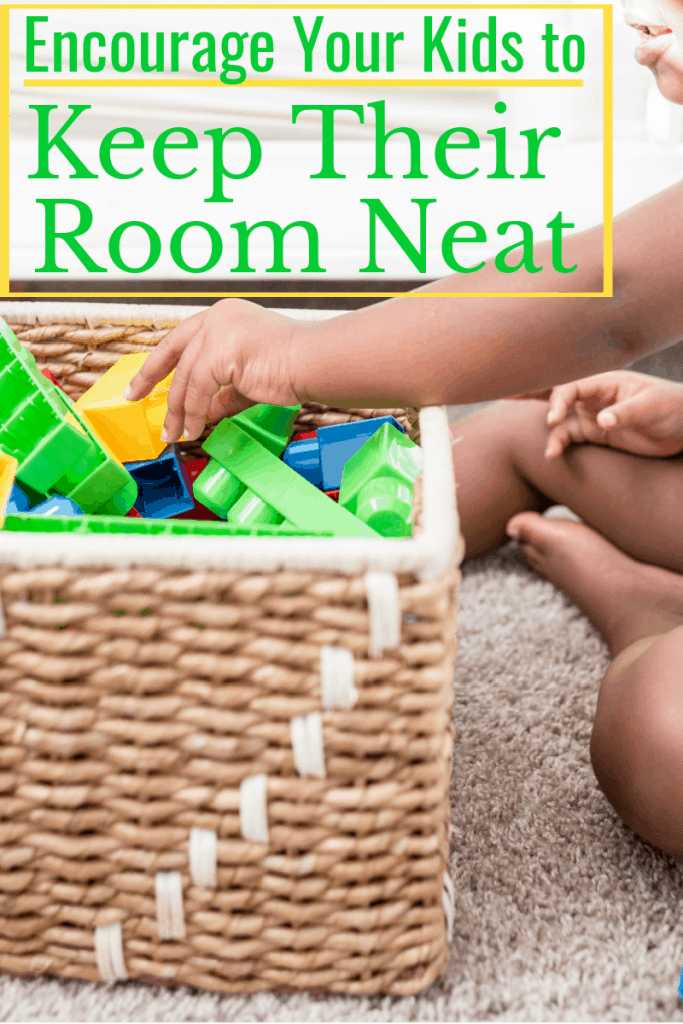
In both of my roles, as a professional organizer and as a parent educator, I’m often asked how to get kids to clean their rooms and keep them picked up. In fact, I was even interviewed for an article on that topic in the August 2020 issue of Real Simple. It’s a common issues that parents face. You are not alone.
How to help your child keep his or room neat?
- Implement the 12 practical tips below to encourage your kids to keep their room neat
- Set clear expectations with your child
- Be consistent to enforcing standards
- Set consequences associated with the tasks and consistently enforce the consequences
- Make it easy to straighten up by using open bins and hooks
- Work with your child in picking up and putting items away, explaining the how and why
- Set reminders on your child’s electronic device or phone
- Use a chore and reward chart for younger children
- Provide non-clutter incentives for a job well-done
Encourage Your Kids to Keep Their Room Neat
Determine Your Limits and Priorities
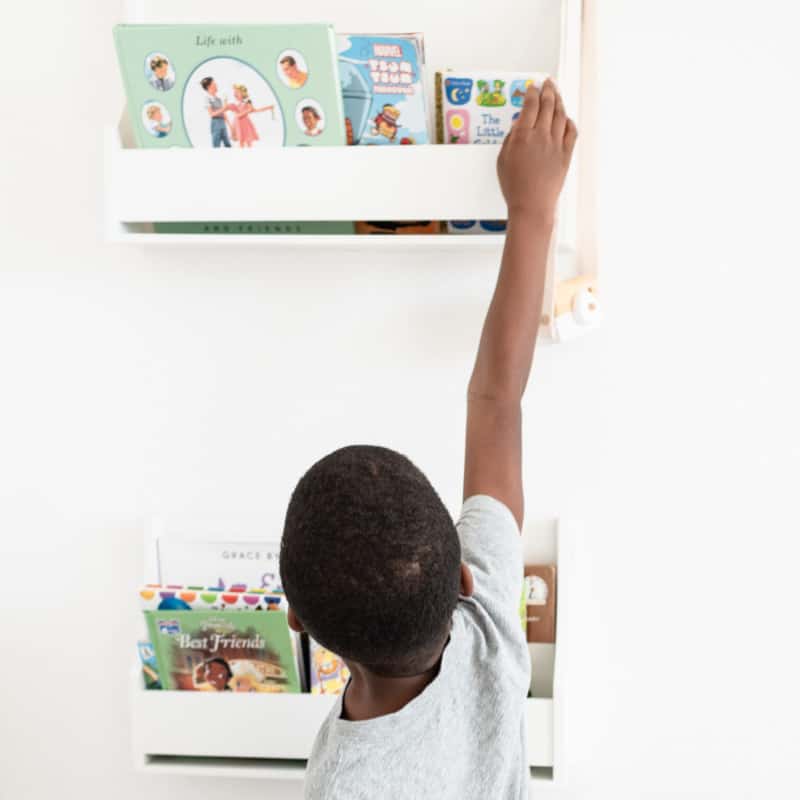
As parents, we’re often balancing competing priorities. Sit down and determine what is most important to you and then the second and third priorities. Set your limits based on your priorities.
- Teaching life skills your child will need as an adult
- Nurturing a close and loving relationship with your child
- Maintaining a clean and tidy home
- Creating a calm and clutter-free environment in your home
- Reducing stress, yours and your child’s
- Reducing arguments
- Preserving your energy
- Having time to spend on fun activities as a family
- Having all family members take responsibility for household chores
These are all important and legitimate priorities. Ideally, we’d like to accomplish them all, but that’s just not realistic. It doesn’t mean that you give up on achieving them all, it just means that right now, choose your top one to three priorities.
Once you choose your priorities, you’ll be able to set limits with your child and work towards achieving your goals.
Be Realistic
Know what’s realistic to expect from your child based on his or her age, developmental stage, capabilities and personality.
Sure, we’d all like two-year olds to pick up their toys when they’re done playing, but that’s just not realistic. It may also not be realistic to expect some teens to clean and tidy up to a perfectionist standard.
Don’t get me wrong, this doesn’t mean that you don’t set standards. It does mean that you need to examine your expectations and set realistic standards.
Set Clear Limits
Based on your priorities, determine what your limits for tidiness and cleanliness will be.
- Make sure that those limits are realistic given your child’s abilities and circumstance.
- Make sure they limits are ones you can verify.
- Make sure you’re clear in explaining the limits to your child.
- “Straighten up your room”, as we all know, means something different to your child than to you.
- Explain exactly what your expectations are.
Common bedroom neatness limits are:
- No food or drinks in the bedroom.
- If food and drink is allowed, dishes brought to the kitchen daily.
- Trash in the trash can.
- All laundry in the hamper.
- No clothes on the floor.
- Bed made every morning.
- Folded clothes put away the same day.
- No loose items on the floor.
- Toys picked up daily or weekly.
- Nothing hidden under the bed.
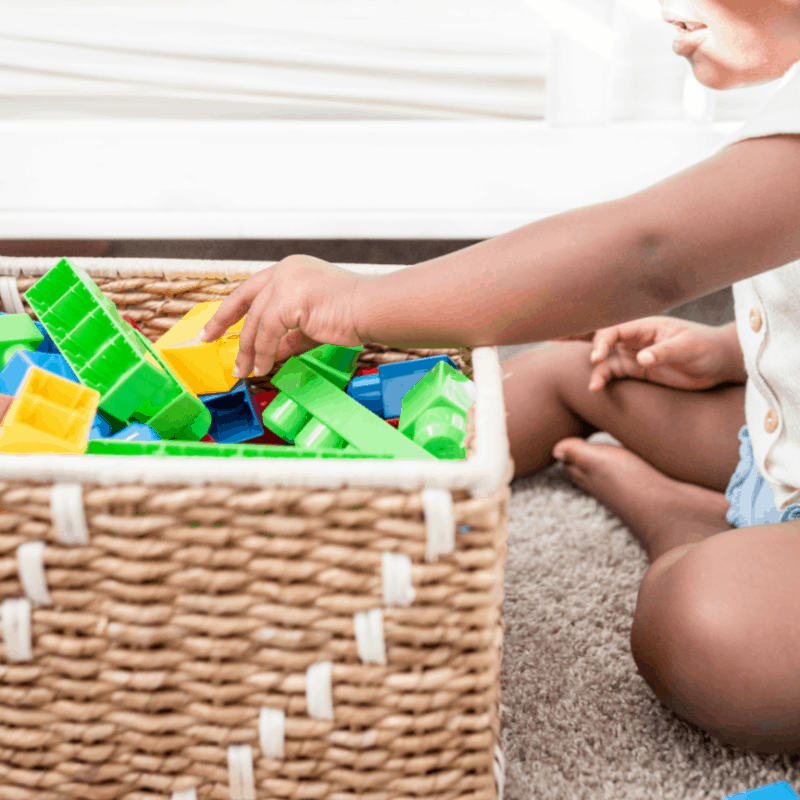
Make It Easy To Pick Up
Let’s be honest, the easier you make it for your child to pick up their things and put them away the more likely they are to do it.
Sure, the lovely wicker basket with the lid is fashionable. Certainly, the expensive organizer designed for a high-end store is adorable. But if it’s not super easy to use, your kids are not going to put their things away.
Choose the easiest storage options you can find for the organizing and clean room win.
- Clothes Hamper
- Put a clothes hamper in each child’s room or bathroom. Put the hamper where the child changes clothes.
- Choose a hamper with an open top. All your child has to do is throw the clothes in the hamper, which is just as easy as throwing them on the floor (especially when you’ve placed the hamper where he or she changes clothes).
- Open Bins
- Use bins and baskets with open tops. Make it easy to just toss items in when he or she cleans up.
- Trust me, this is a biggie to encouraging your child to pick things up. If he or she or he has to remove a lid or open a cabinet, it’s less likely to happen. Look, I’m on your side. That seems silly to me, too, but it works.
- Make sure the open bins are easy to use. Those cute shelves with colorful bins that tilt precariously at an angle on dowel rods is not the best option. While it looks like a brilliant design, it’s often difficult for children to use. Be sure to think carefully about how your child will use the organizer.
- Open Book Shelves
- Just as with the bins, make putting books or other items away on a shelf as easy as possible.
- Open shelves, without doors and
- Hooks
- Use hooks instead of hangers or even shelves.
- Metal hooks or Command hooks both work.
- Hooks for well for:
- Clothing of all types
- Backpacks, sports bags, purses
- Music instrument cases
- Hats, helmets and caps
- Towels of all kinds
- Bathrobes, pajamas and only wore a few hours clothes
- Dress-up Clothes
- Basket or bin to hold
- Blocks
- Figures & Cars
- Balls & Sports equipment
- Train set pieces
- Bath toys
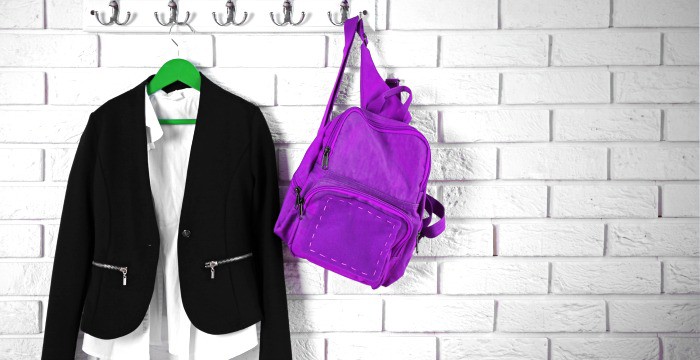
Daily Pick Up
When you establish your tidiness expectations, establish daily clean up rules. What is your child expected to do each and every day?
Keep the number of daily room clean up rules to three or four, especially for younger children. Once the tidiness rules are second nature, you can add two to three more.
If starting from scratch in establishing tidiness habits with older children, you should also start with only three to four daily rules. You don’t want to discourage your child or overwhelm them. Make success achievable. Celebrate the success together. Allow the rules to become habits and then add addition rules.
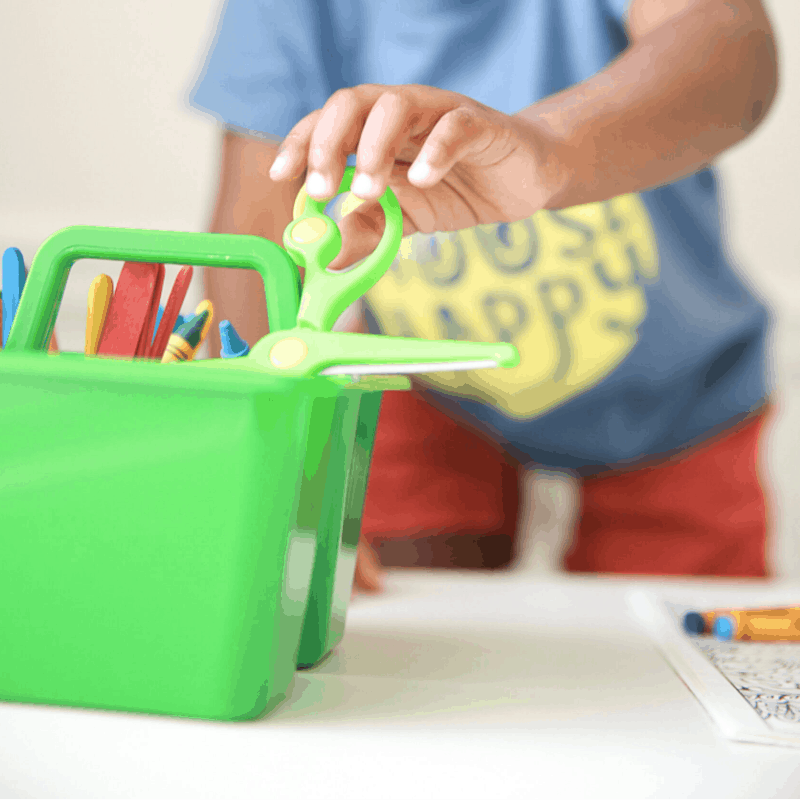
Weekly Pick Up
Teach your children that if they are faithful about picking up each day with their daily chores, the weekly chores will be much easier to accomplish.
Establish the clean up chores that must be accomplished weekly. It’s helpful if the entire family completes their weekly clean up chores on the same day. When that happens, your child comes to think of cleaning up as a habit everyone does.
Reverse Time Out
I’ve found that using reverse time out works well as a consequence when you child doesn’t pick up his or her toys and items.
How reverse time out works:
- When your child doesn’t pick up an item and clearly understands the expectations, you simply take the item and put it in time out.
- Don’t mention the item. Wait for your child to ask about it.
- If your child doesn’t ask about the item after a week or two, it may indicate that the item is not important to her. This is an opportunity to discuss whether the item is still wanted and taking care of items you need or want.
- When your child asks where his or her item is, simply and calmly ask, “Where did you leave it?” or “Did you put it away where it belongs?” Your child will quickly learn to ask “Mo-ommmm, did you take my ______?” when he can’t find something.
- The key is not to scold or lecture. Simply remind your child that if items aren’t put away they go into time out.
- Your child may earn the item back by doing a chore from a chore list you create. Explain that your child did not do her chore in putting the item away and created extra work for you. Your child now needs to help you out to get the item back.
- Create a list of chores that you need to do, but never get around to. Some of my favorites are:
- Dusting the baseboards
- Shaking out throw rugs
- Sweeping out the garage
- Brushing the dog
- Dusting fan blades
- Cleaning light switch plates
- Disinfecting doorknobs and garage door openers
- Dusting panels on doors
- Vacuuming chairs and couches
- Vacuuming the stairs
- Set a time limit for your child to earn back the item. If the item isn’t worth working to get back, then it’s probably not important or necessary to your child.
- This technique works well because:
- There is no nagging and arguing.
- You’re almost happy when you find an item left out because you know one of the chores on your list will be done (and not by you!).
- It clearly identifies items that should be sold, donated or thrown away based on whether your child is willing to work to earn it back.
- It teaches your child additional life and cleaning skills.
Reward Chart
There are many chore charts available or you can create your own. Simply list your child’s name across the top of the chart and the days of the week down the side. In each block list the tasks that should be done each day.
Each day that the tasks are done, your child earns a star or check mark or sticker.
Depending on the age and abilities of your child, allow them to earn a special treat on the weekend if they earn four to six stars for the week. Don’t make it too hard for your child to earn the treat or they’ll become discouraged and not try. Be sure to choose clutter-free treats for your child to earn.
More Ideas to Help Your Child Clean Their Room
- How to Teach Your Child to Declutter
- 5 Tips for an Organized Child’s Room
- DIY Rocket Raccoon Organizing Bin
- DIY Lego Head Storage Container
- Upcycled Comic Book Clementine Crate
- Upcycled Comic Book Can
- The Best Barbie Storage Ideas
- Playroom Storage Ideas
Remember your goals and priorities throughout the process of encouraging your children to keep their room neat. And just like most things with your children, they’ll keep changing as they grow up, so your priorities and strategies will need to grow and change with them.
Pin now so you can always find this parenting resource. I’d love for you to share tips that have worked for you in teaching your child to clean up their room.
For all of my best parenting tips and ideas, check out the table below. You can scroll though the table and look for ideas or search for specific ideas with the magnifying glass in the upper right-hand corner (on desktop). Click on the topic and then click through the specific article.

I’m a mom of 3, a veteran, military spouse. I’ve moved into 20+ homes all around the world. My passion is helping busy people make the space and time for what’s really important to them. Learn more about Organized 31 and me.

